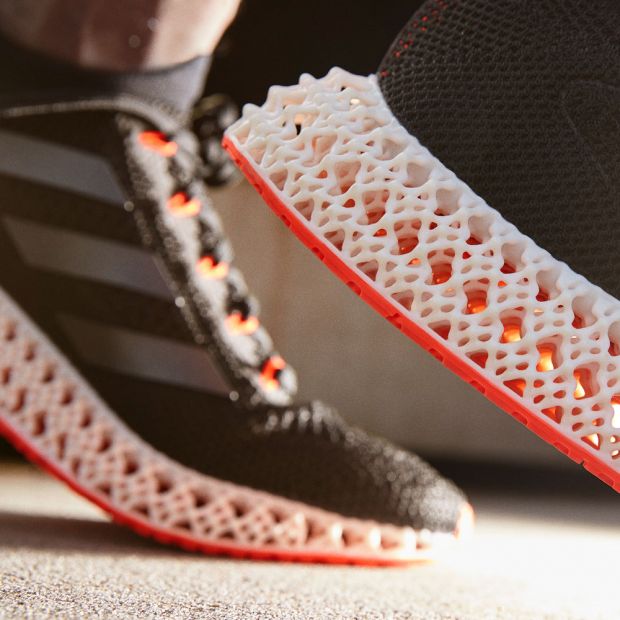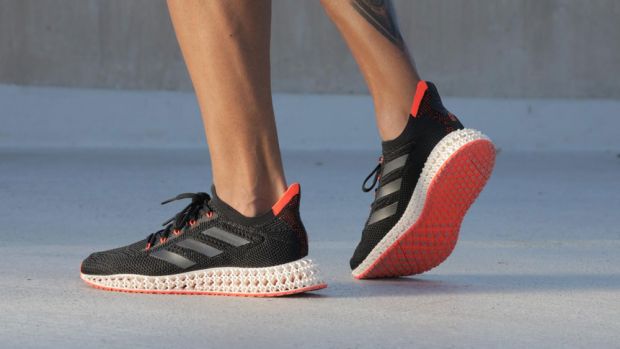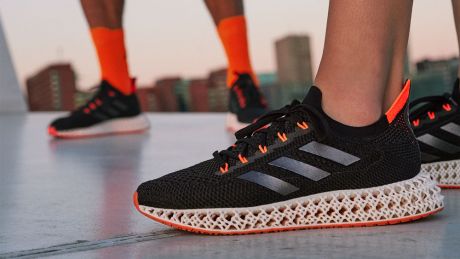For
- 3D-printed lattice midsole pushes you forwards
- Distinctive design
Against
- Heavy and unwieldy on the run
- Very expensive for what it is
- Outperformed by many cheaper shoes
You can trust Coach
In the competitive world of the best running shoes, any successful innovation is quickly mimicked – the glut of carbon plate racing shoes is a case in point. Adidas has been experimenting with 3D-printed midsoles for several years, but they haven’t caught on. The shoes I’ve previously tested haven’t cut it as serious running shoes and were better suited to gym training.
The new 4DFWD features a completely new midsole design built for running. The 3D-printed bowtie lattice structure is said to propel you forwards, converting the braking forces of your downward stride into horizontal forward motion.

It’s a shoe Adidas told me is suited to heelstrikers, who will gain the most benefit from the propulsive midsole, and it’s best used as an everyday trainer rather than as a speedy race shoe.
Part of the reason for that is the weight. While the 4DFWD is lighter than previous 4D shoes it weighs 338g in my UK size 9, which makes it fairly heavy even for a daily trainer.
At £170, the 4DFWD really needs to impress because it’s up against a strong field of running shoes that use foams designed to offer the same combination of energy return and comfort.
I’ve put in two longish efforts wearing the 4DFWD so far. The first was a 60-minute recovery run, and the second an easy 90-minute half marathon.
I am a heelstriker so I should get the most from this propulsive midsole technology. I did notice it a little, but not in a way that suggested this was a breakthrough design. It feels similar to shoes with a rocker, which help to move you through your footstrike. Even Adidas’s UltraBoost 21, which I found an uncomfortable, heavy shoe, performed similarly well at easy paces.
I also felt the weight of the 4DFWD over the course of the 90-minute run. It feels more like a shoe to be used for shorter sessions, and is perhaps better suited to someone logging a few 5-10km runs each week.
It’s not a bad running shoe, but the effect of the new midsole is muted and there are plenty of lighter shoes that offer similar rides for less money. The Puma Velocity Nitro costs £100, has a livelier feel and is more versatile.
Within the Adidas line-up there are more impressive daily training shoes that use the company’s Boost foam, like the SolarBoost. Boost might be relatively old technology now, but its performance is still impressive and it is highly durable.
On that note it is worth noting that Adidas told us that the 4DFWD should last as long as its other shoes, so if you’re used to hitting a certain mileage in the UltraBoost, for example, you can expect a similar lifespan from the 3D-printed midsole.

Outside of the midsole the 4DFWD has a comfortable Primeknit+ sock-like upper. There’s a rubber outsole, the likes of which I’ve found offers good grip on wet roads and light trails. The shoe fit true to size for me, and feels similar to other Adidas shoes with knitted uppers.
Credit to Adidas for bringing a new midsole technology to the table. Each part of the structure can be fine-tuned using design software, so there is still hope that 3D printing can be used to make more impressive shoes.
The 4DFWD is scheduled to launch with a limited-edition red and black colourway that will be available in the Adidas app – sign up between 5th and 16th May for a chance of buying this first launch of the shoe. Another limited edition of the 4DFWD will be released in July to celebrate the Tokyo Olympics, before it goes on general sale in August.

Nick Harris-Fry is a journalist who has been covering health and fitness since 2015. Nick is an avid runner, covering 70-110km a week, which gives him ample opportunity to test a wide range of running shoes and running gear. He is also the chief tester for fitness trackers and running watches, treadmills and exercise bikes, and workout headphones.

